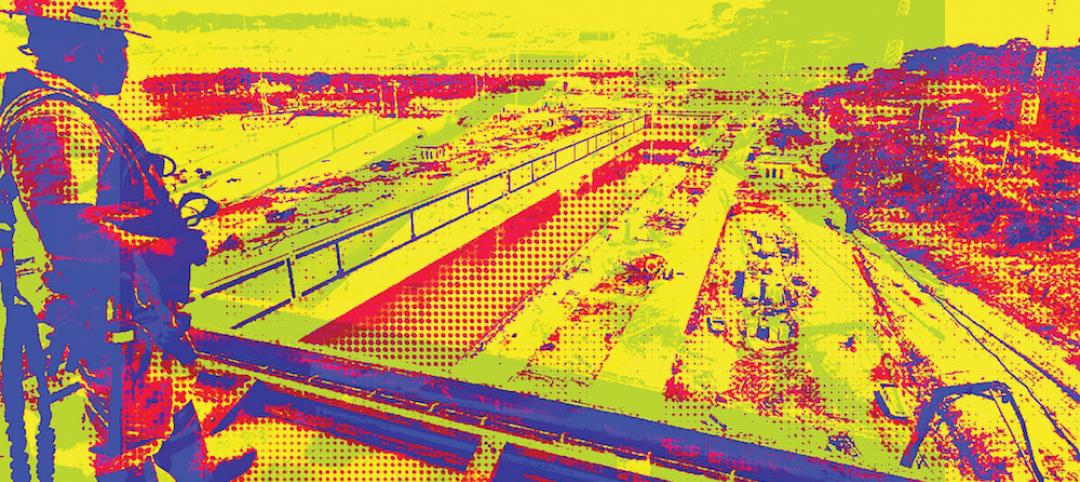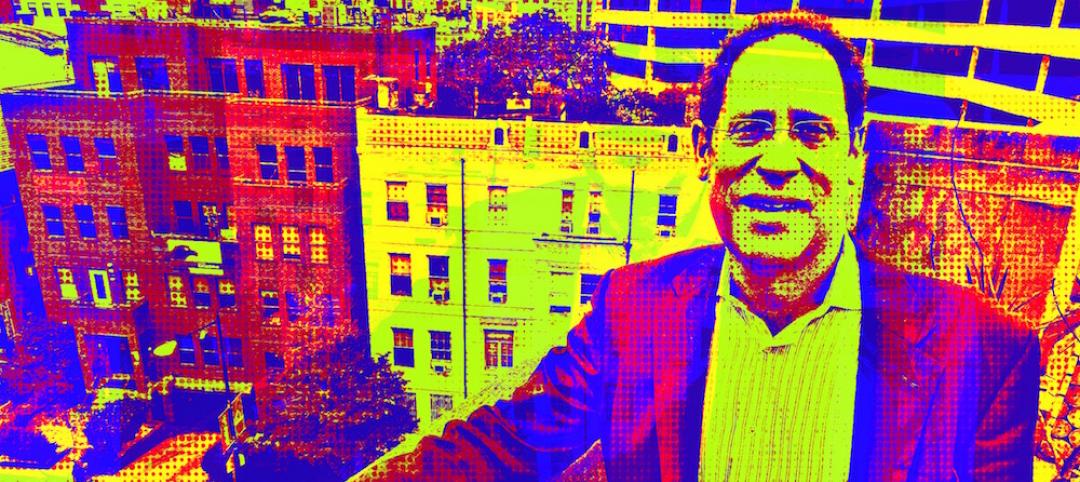Jerry Yudelson is on a mission. He wants to get architects, engineers, contractors, and property owners talking—really talking—about the future of green building. “There’s been no serious intellectual discussion about whether we’re going in the right direction,” says the licensed engineer and author of 13 books on green building. “We’re just tinkering with the system.”
The system in question is the LEED rating program and its less recognized cousins, Green Globes and the Living Building Challenge. Yudelson’s new book, Reinventing Green Building: Why Certification Systems Aren’t Working and What We Can Do About It (New Society Publishers), paints LEED as massively ineffective: not even one percent of nonresidential buildings (less than four percent by area) has earned LEED certification, despite the U.S. Green Building Council’s stated goal of 25% of buildings earning a LEED plaque. That, in Yudelson’s view, can hardly be deemed “market transformation.”
BD+C MOVERS AND SHAPERS
The People, Institutions, and Movements that are influencing design and construction in the U.S. and around the world.
Dan Gilbert – Detroit's Catalytic Converter
Judith Rodin – Crusader for Resiliency
Bruce Katz – Urban Evangelist
Millennials – The Disruptors
Alloy LLC – Vertical Integrator
Jerry Yudelson – Green Giant
The PANAMAX Effect – The New Panama Canal
Theaster Gates – Real Estate Artist
Yudelson’s eco-roots go back to 1970 and his time as a student organizer at Caltech for the first Earth Day. He has devoted much of the last two decades in the service of the USGBC. He chaired the Greenbuild steering committee for six years and is credited with training thousands of AEC professionals for the LEED accreditation exam. He was named to the first class of LEED Fellows. More recently, he was president of the rival Green Building Initiative; he resigned after 15 months over a “difference in direction” with the GBI board.
In Reinventing Green Building, Yudelson meticulously documents the failure of current green building rating systems to address what he calls the “Big Three” factors related to climate change: energy use/carbon emissions, water use, and waste recycling.
To be successful, he says, any future rating system must meet building owners’ needs for sustainable operations, not just what environmentalists want. It must deliver appreciable benefits in a cost-effective manner. Such a rating system would have to be user-friendly, deliver results quickly and fairly, and be scaled for rapid uptake—covering 25% of U.S. building area in 10 years.
FIVE WAYS TO ADDRESS GREEN RATINGS PROGRAMS
Yudelson offers five scenarios for future rating programs. The first would see LEEDv4 and other rating systems slogging along in a business-as-usual mode, barely generating any measurable gains (except possibly for LEED Multifamily).
5 GREEN BUILDING SCENARIOS
• Business as usual
• Reform the delivery model
• Internet 3.0 – Greater user experience
• Net-zero energy
• Continuous improvement
The second would create a mélange of LEED and BREEAM, the British rating model. Yudelson thinks a simplified, 100-point system with only five credits could work nicely for portfolios of existing buildings—convenience stores, restaurant chains, hotels, schools, etc.
The third scenario, “Internet 3.0,” would call for greater end-user contribution to the development of the rating model. This model would empower building occupants and visitors to use their smartphones to assess and report on how well individual buildings are tackling not only the Big Three factors but also key performance indicators—user comfort, air flow, lighting, etc. He advocates for AIA contract documents to include a requirement for post-occupancy evaluations, to gather better data on building performance and remediate any shortcomings.
Net-zero carbon, the fourth scenario, would put all its eggs into reducing buildings’ carbon impact. Yudelson sees the Association of College and University Presidents’ Climate Commitment as the kind of prime mover that could make this happen.
THE 3 S’S OF A SUCCESSFUL GREEN RATING SYSTEM
Smart – incorporating new technologies for building design and operations
Simple – easily implemented by building operations personnel
Sustainable – focus on reducing energy/carbon, water use, and waste
The last, and simplest, option would be to encourage large organizations like the U.S. military, retail shopping center developers, and the GSA to engage in continuous improvement on energy, water, and waste. President Obama’s 2015 executive order already requires federal agencies to meet such a mandate, but it needs a more effective implementation platform, according to Yudelson.
Yudelson hardly claims to have all the answers. He just wants to go beyond reliance on LEED and other building rating systems to attack climate change. “It’s time to remove the barriers to innovation,” says Yudelson.
He wants architects, engineers, and other building professionals to use their creative skills to find a new path to addressing energy use, water use, and waste reduction in the built environment. “It’s a tremendously exciting time to be involved in buildings, because we now know what to do,” says Yudelson. “It’s a question of applying what we know and being open to new ideas.”
Related Stories
Movers+Shapers | Jun 17, 2016
REAL ESTATE ARTIST: Theaster Gates works to revitalize African-American neighborhoods
The award-winning Chicago artist renovates properties into studios, libraries, and spaces that commemorate art and black culture.
Movers+Shapers | Jun 16, 2016
THE PANAMAX EFFECT: Panama Canal expansion could trigger an East Coast construction boom
Cities lining the East Coast and Gulf Coast, from New York City to New Orleans, are spending big bucks to accommodate the larger vessels that will now be able to cross a wider and deeper Panama Canal.
Movers+Shapers | Jun 14, 2016
VERTICAL INTEGRATOR: How Brooklyn’s Alloy LLC evolved from an architecture firm into a full-fledged development company
Led by an ambitious President and a CEO with deep pockets, Alloy LLC's six entities control the entire development process: real estate development, design, construction, brokerage, property management, and community development.
Movers+Shapers | Jun 13, 2016
THE DISRUPTORS: The Millennial generation is imposing its will on design
AEC firms, particularly those that design hotels and offices, gain a competitive edge by knowing how to appeal to the largest share of the American workforce.
Movers+Shapers | Jun 10, 2016
URBAN EVANGELIST: Bruce Katz sees America humming again, city by city
Katz, best known as Co-director of the Brookings Institution's Metropolitan Policy program, believes that cities are dynamic networks of like-minded public and private interests that have the potential to generate economic growth.
Movers+Shapers | Jun 9, 2016
CRUSADER FOR RESILIENCE: Judith Rodin and the Rockefeller Foundation seek sustainable responses to disasters
The Rockefeller Foundation has long helped municipalities and businesses respond to manmade and natural disasters. Since Rodin took over as president in 2005, the Foundation has invested more than $500 million to help communities strengthen their resilience.
Movers+Shapers | Jun 9, 2016
8 of the AEC industry's biggest Movers+Shapers
BD+C’s new Movers+Shapers program honors AEC/O industry stalwarts.
Movers+Shapers | Jun 8, 2016
DETROIT'S CATALYTIC CONVERTER: Dan Gilbert’s Bedrock Real Estate Services is helping the Motor City get its mojo back
Gilbert has invested $2.2 billion in Detroit, buying up left-for-dead properties and redeveloping them to lure businesses, investors, and residents back to this beleaguered city.
Movers+Shapers | Feb 8, 2016
Call for entries: BD+C’s 2016 AEC Movers+Shapers report
BD+C’s new Movers+Shapers program will honor AEC/O industry stalwarts. Honorees will be profiled in the June 2016 issue.

















